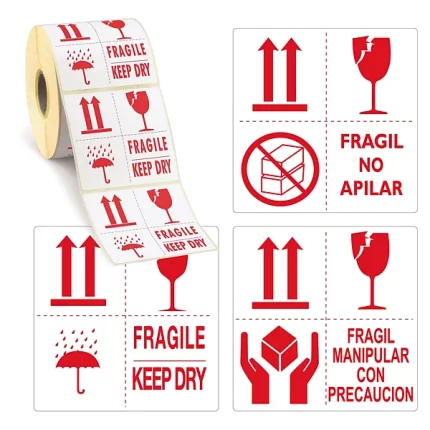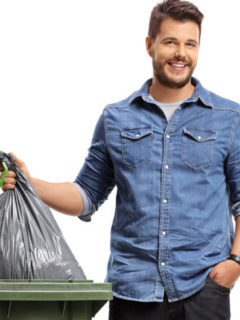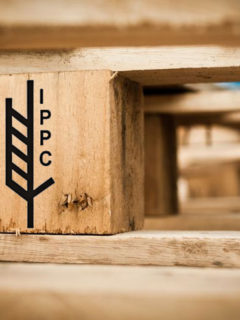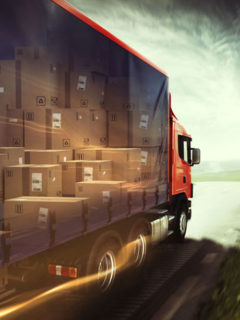Packaging is much more than just a container: it’s the backbone of your logistics and marketing strategy. Tertiary packaging plays a key role in this. Not only does it protect your products during transport and storage, it also has a direct impact on customer satisfaction, cost control and environmental issues. In this article, you’ll find out everything you need to know about tertiary packaging and how to make the most of it.
What are the 3 types of packaging?
European Directive 94/62/EC on packaging and packaging waste establishes and defines 3 categories of packaging: primary, secondary and tertiary.
► Primary packaging
This is the packaging in direct contact with the product and which ensures its protection. Primary packaging is also known as sales packaging because it is the smallest packaging unit that can be offered individually to consumers. It must therefore be designed to be as attractive as possible.
From a commercial perspective, reusable or reusable packaging offers real added value. It reinforces your brand’s image as an eco-responsible player and helps you comply with European packaging regulations.
What does primary packaging do?
- Insulates and stabilises your product (e.g. vacuum-packed coffee).
- Provides direct protection against moisture, light and bacteria.
- Reinforces brand identity and serves as a marketing tool.
- Displays important product information.
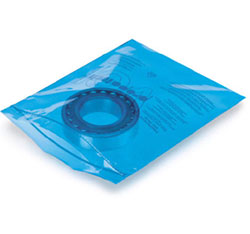
► Secondary packaging
While primary packaging is oriented towards trade, secondary packaging meets more transport and storage needs. It groups together several primary packages, earning it the namegrouped packaging.
Secondary packaging is used both to showcase the product it contains and to offer it in batches of several units in shops. Let’s take the example of drinks. The bottle is the primary packaging, while the plastic film or cardboard that groups together several bottles in a pack is the secondary packaging.
What is the role of secondary packaging?
- It groups together the primary packaging.
- Protects against damage such as knocks and drops.
- Improves product presentation in shops.
- Provides additional information such as barcodes.
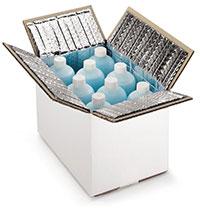
► Tertiary packaging
This final category forms the outer layer of a complete package. Tertiary packaging groups together secondary packaging and offers the greatest protection during handling, storage and transport. This is why it is also called transport packaging. It allows a large number of products to be grouped together during transport or until they are sold.
Because of their crucial role, tertiary packaging must be made from very robust materials, such as multi-fluted corrugated cardboard or wooden crates. It also includes products such as pallets, corner protectors, plastic film and any other element that helps to ensure the uniformity and stability of the cargo during transport or storage.
What is the role of tertiary packaging?
- Regroups and stores secondary packaging.
- Optimises the space available in loading areas (e.g. palletising).
- Protects against adverse weather conditions.
- Facilitates loading and unloading.
- Ensures safer transport.
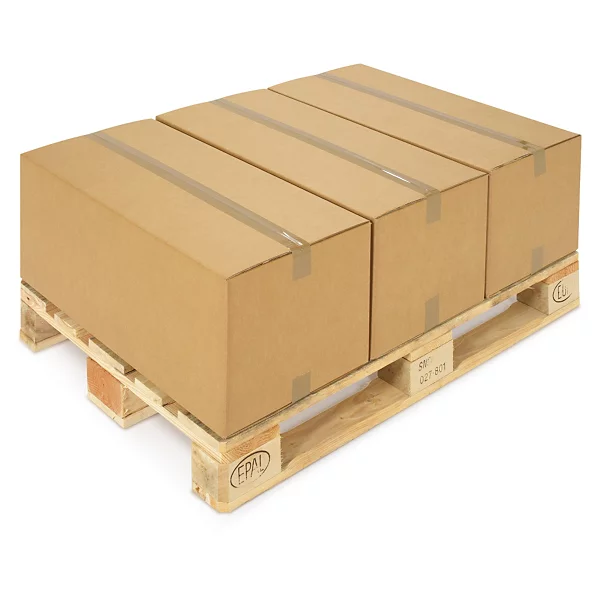
7 tips for optimising tertiary packaging
Tertiary packaging is the final stage in the packaging process, which makes it indispensable in any supply chain. It ensures that goods arrive at their destination safely and in perfect condition. An intelligent approach to transport packaging offers real benefits: lower costs, reduced environmental impact and improved customer satisfaction. Get the most out of your tertiary packaging with these 7 practical tips!
► Tip 1: Choose made-to-measure tertiary packaging
It may seem obvious, but the importance of well-fitted packaging is often underestimated. Sturdy tertiary packaging, tailored to the dimensions and weight of your products, not only prevents damage during transport, but also ensures more efficient stacking and storage.
You should also avoid leaving empty spaces in your boxes or on your pallets. They represent a waste of materials, and increase the risk of slipping and bumping. By investing in packaging designed specifically for your products, you can guarantee that they will be transported safely and received by your customers in perfect condition.
► Tip no. 2: Less is more!
Using a lot of packaging isn’t always synonymous with efficiency. Materials that are too large or too heavy can considerably increase your shipping costs and are often unnecessary. Instead, choose lightweight but sturdy materials and think intelligently about how the products are arranged in the packaging.
By reducing the weight of the volume, you cut transport costs and contribute to a more sustainable supply chain. Innovative solutions such as honeycomb cardboard or recycled air cushions offer excellent protection while limiting environmental impact. When it comes to packaging, less is often more!

► Tip no. 3: Eco-labels
Adopting eco-friendly practices is no longer a trend: it’s a necessity for all businesses. By choosing eco-labelled packaging materials, such as recycled cardboard, biodegradable film or reusable pallets, you’re not only reducing your carbon footprint, you’re also showing your customers that you’re acting responsibly. What’s more, you’re making conscious choices that benefit your brand’s image.
► Tip 4: Personalise your tertiary packaging
Tertiary packaging doesn’t have to be boring! Stand out from the competition by emblazoning your packaging with your brand name, logo or even a fun slogan. Customers and recipients will immediately recognise your parcel and it will reinforce your brand identity.
Think about using colours, stickers and tape with your logo printed on them or even QR codes leading to a thank you page or video. This is how you turn functional packaging into a powerful marketing tool.
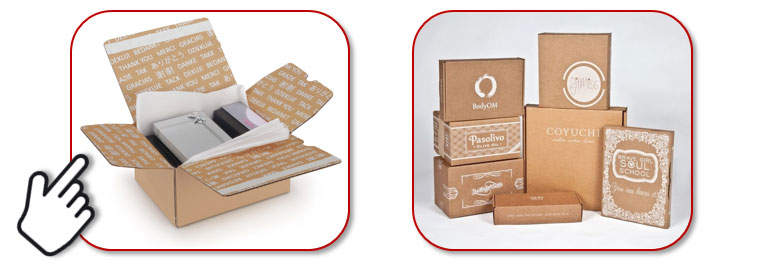
► Tip 5: Automate and optimise
Manual packaging is time-consuming and error-prone, especially for large volumes. By automating the packaging process – such as with a banding machine or an advanced labelling system – you not only save time, but also reduce the risk of error. Standardisation ensures consistent quality and makes it easier to manage flows during peaks in activity. It also allows you to assign employees to other logistics activities.
► Tip no. 6: Make it easy to open
There’s nothing more frustrating than a package that won’t open! Make sure your tertiary packaging is easy to open and handle, both for your employees and the recipient. For example, use tear strips, resealable closures or clear instructions. This will speed up unpacking and prevent damage to the product. Practical packaging is always appreciated.
► Tip 7: Label intelligently
Good packaging also relies on accurate information. Make sure every consignment has legible labels with barcodes, QR codes and all the essential information about the contents and destination. Don’t forget to add warnings such as “fragile” or “top” if necessary.
This will avoid wasting time, minimise errors and ensure optimum tracking of shipments. Intelligent labelling requires very little effort, but it has a significant impact on the smooth running of deliveries and on customer satisfaction.
